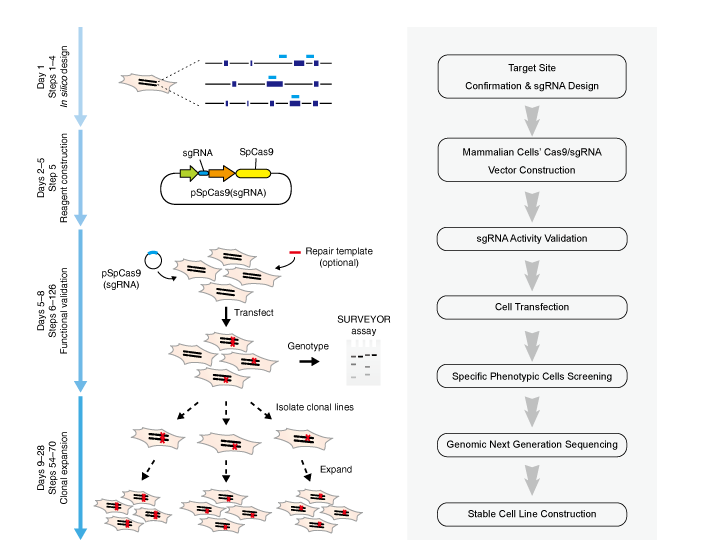With the rapid development of gene editing technology, especially the extensive application of CRISPR technology in recent years, humans have gained the unprecedented ability to change and modify the genome. CRISPR technology is derived from the bacteria’s own “immune system” against bacteriophage. This technology utilizes single-stranded guide RNA (sgRNA) and the Cas9 protein to enable simple, rapid, and low-cost gene editing in vivo and in vitro. Using CRISPR technology, people can not only effectively edit the coding gene and perform the large-scale genome screening, but also can combine with Next Generation Sequencing (NGS) to study the function of non-coding RNA (ncRNA).
Nowadays, CRISPR technology has been widely used in various laboratories around the world. Researchers are able to achieve the artificial gene modification on almost all cell lines and most commonly used experimental animals. Meanwhile, CRISPR gene editing technology has broad prospects and great potential for development in the study of human genetic diseases, viral infection diseases and cancer research.
Mammalian Cell Gene/Genome Editing Procedure

Mammalian Cell Gene/Genome Editing Research Design
1. Mammalian cell gene knock-out/knock-in

- Customized genome sgRNA design
- Gene retrieval & sgRNA design in genome or panel pattern

- Syno® 2.0 gene synthesis & vector construction platform
- Syno® 3.0 sgRNA library construction platform
- Vector sequence design of multi-pattern species

- Validation of sgRNA activity in vitro
- Validation of sgRNA activity in vivo

- Stable cell line construction
- Gene-knockout animal model construction
2. Non-coding RNA function of mammalian cells

- Gene retrieval & pg-sgRNA design in genome or panel pattern

Library Construction
- Syno® 2.0 gene synthesis & vector construction platform
- Syno® 3.0 sgRNA library construction platform
- Vector sequence design of multi-pattern species

& NGS Verification / Analysis
- Lentivirus library packaging
- Library quality verification by NGS

of Cell Lines
- NGS data comparison before & after screening
- Cell line construction or animal model establishment
Mammal Gene Editing Service Advantages
Mammal Gene Editing Service Advantages
- One-stop service
- Proprietary technology platform
- sgRNA library synthesis
- High-throughput function screening platform
Reference
Ran, F.A., et al., Genome engineering using the CRISPR-Cas9 system. Nature Protocols, 2013. 8(11): p. 2281-2308

